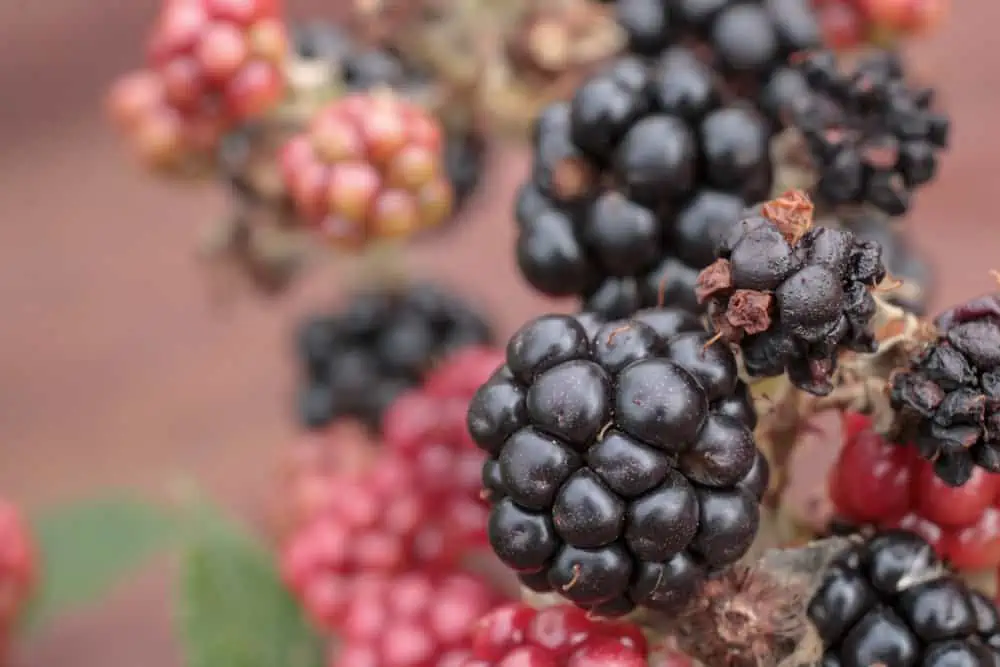You’ve most likely eaten or at least heard of the usual berries: strawberries, raspberries, blackberries, and blueberries. But, have you heard of the hybrid fruit, boysenberry?
Boysenberry is a cross between several other types of berries and was first grown as a part of an experiment in Southern California. This mid-summer fruit has just the right flavor to make it a must-have for jams and pies! This plump and juicy fruit is popularly cultivated in California, Oregon, and even New Zealand.
If you’re curious about its flavor, we’re here to answer all your questions about the taste and texture of boysenberries, along with some tips on how to use them.
What does Boysenberry taste like?
Taste-wise, boysenberry is quite similar to its parents, blackberry, dewberry, raspberry, and loganberry. Its rich and complex flavor is hard to describe. As a hybrid fruit, it contains a mix of these berries, with the result being a combination of sweet, tangy, and acidic. The fruity sweetness of a boysenberry has no equal!
When you bite into a boysenberry, it gives you a burst of juiciness, quite similar to what you get with a blackberry. It also has a slightly sweet and floral flavor palette like that of a raspberry. But, it’s slightly tangier than its parents.
The tart flavor profile makes it a perfect snack. Besides eating it fresh, you can also add it to Greek yogurt, smoothies, and salads. Many people like to add boysenberries to their drinks and cocktails. You can cook down the berry into sauces and purees to go with your roasted meat or vegetables. Its tangy flavor can really enhance the overall taste of any dish you add it to! They’re also great to have in jams, custards, and pies.
These large fruity berries are also used in making wine, which tastes great with white cheddar, chocolate, and even as a stand-alone drink! The sweet taste of wine, with a hint of tart boysenberries, goes perfectly well with desserts.
In terms of appearance and texture, a boysenberry is a plump and firm berry, with a distinct red-purple color. The tightly clustered berry is similar to a blackberry shape-wise, albeit rounder. It’s quite a fragile fruit; the soft texture and thin skin causes boysenberries to bleed and leak. Therefore, they decay soon after their harvesting. You can preserve them by freezing them on a flat tray to cook or bake them later.
The first producers of the boysenberries, Knott’s Berry Farm, organize a food fest called the Knott’s Taste of Boysenberry Festival, which is an outdoor dining event. The event is a food fest, where the farm serves over 65 dishes infused with the sweet-tart boysenberry flavor.
Do boysenberries taste like blackberries?
Although blackberries and boysenberries belong to the same family and share similar features, they also differ in quite a few ways. For starters, boysenberries are glossy and large berries, while blackberries are smaller and sweeter than the former. As the name suggests, blackberries are pure black, while boysenberries are a mix of red, purple, and maroon.
The shape of a blackberry can be described as a pine cone, while a boysenberry has a marble-like round shape. The berry plants also grow differently; while boysenberries grow horizontally, the blackberry plant is mostly erect. Boysenberries have druplets similar to a raspberry, but its core is like that of a blackberry.
Are boysenberries safe to eat?
The boysenberry plant is toxic as the leaves contain poisonous content. The berries are safe to consume, as long as you have a few. Eating a large quantity of the berries may lead to stomach cramps, diarrhea, blurred vision, or even convulsions.
Conclusion
Boysenberries are juicy, fruity berries with a slightly sweet and tangy flavor profile. Under-ripe boysenberries may have a tart undertone. As a cross between blackberries and raspberries, boysenberries have similar nutritious values as its parents. This sweet-tart fruit contains several anti-oxidants, vitamins, and minerals that help in promoting cell growth and protect them from damage. Additionally, they’re also rich in fiber, which helps maintain the gut health by promoting digestion and smooth bowel movements. Because of its sweet and floral character, it’s the perfect accompaniments to ice creams, drinks, pies, jams, and fruit bowls!
Since the berries are prone to damage because of its thin skin, you can save them by freezing them for use later.

